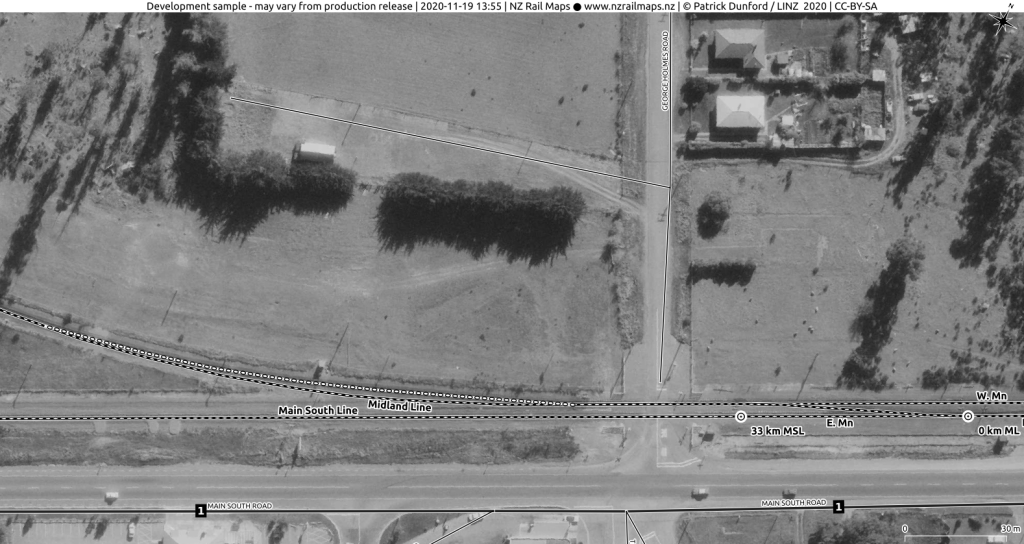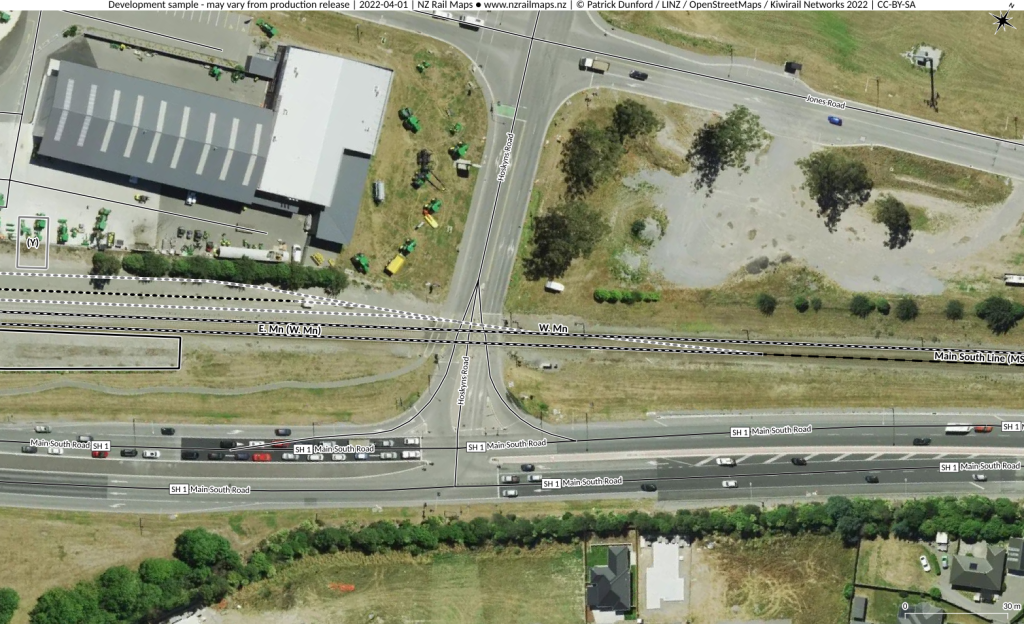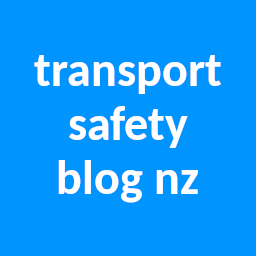One of the factors contributing to the establishment of this blog is a growing awareness of level crossing safety issues in New Zealand. Let’s go back 29 years for an example. On August 25, 1993, the Southerner passenger train collided with a concrete mixer on at at a level crossing on George Holmes Road, Rolleston. The train had three crew and 91 passengers on board. As a result of the collision, three passengers died and a further seven received serious injuries. The accident received a high level of media attention when it was revealed that one of the deaths occurred to Rachel Louise Cairns, who was a member of a famous New Zealand sporting family. Due to the deaths and the many safety issues raised, the accident was investigated by the Transport Accident Investigation Commission, which released its report no. 93-112 almost two years subsequent.
Many people will often take a superficial “black and white” or “open and shut” view of collisions taking place at intersections (a level crossing is effectively an intersection between a railway line and a road). In their eyes, the road user is at fault every single time. Whilst it is true in practically all cases of level crossing collisions that the train does not cause the situation (there are some cases where a train is at fault, mainly due to breaches of operating regulations, which will not be examined here), there is a third factor at play and that is unsafe roading design. In order to gain an understanding of how this played out at Rolleston on 25 August 1993, here is a map of the George Holmes Road railway crossing using an aerial photo from 1984 (courtesy of the New Zealand Rail Maps project).

Where roading authorities consistently fail in understanding safety issues at crossings such as these is by ignoring the consequence of placing two parallel transport corridors so close to each other. The easiest way to understand the design dynamics of this is to treat the railway as effectively another road. How many actual road intersections exist in New Zealand which have two parallel roads close together with just a little cross piece of road between them (basically an H shaped intersection)? How hard is it to understand the safety issues that would result from such complex intersections of roads and why is it so difficult to translate that into understanding that the same issues relate to level crossing design and that the only reason that there are relatively few serious accidents at level crossings of this type is a relatively low frequency of rail traffic in many cases?
The driver of the concrete mixer was stopped on State Highway 1 to the right hand (north) side of the intersection. He had collected his load of readymix from Riccarton and was traveling to Burnham to make his delivery, which required him to make a right turn off the highway into George Holmes Road. As this intersection was uncontrolled, he had to apply a high level of concentration to ensuring that he was able to make the turn across the highway in front of oncoming traffic safely. This would also require him to build up his speed as quickly as possible in order to have sufficient safety clearance from such traffic. Once he was clear of the intersection he would have had almost no time at all to brake for the railway crossing and the weight of his vehicle (20 tonnes loaded) would have, in any case, made it impossible to stop in the short distance available (13.7 metres). To add further to this, the Southerner train was approaching from the north and was traveling at 100 km/h, meaning that it was effectively approaching from behind the driver as he waited to commence his turn off the highway; he could not have seen the train approaching except possibly in his rear view mirrors, which would have been very difficult. Even if he had seen the train coming, he would have been forced to choose between the risks of a highway collision or a railway collision. In this case, the driver testified that he did not actually see the train coming until he was almost on the crossing itself. The train was unable to stop until the head of it was 725 metres past the crossing, despite the fact that the locomotive engineer was able to see the truck waiting to turn from several hundred metres prior to reaching the crossing. The damage was primarily to two of its carriages and this is where most of the deaths and serious injuries took place. There was another factor in the use of wooden framed carriages, which was to have a consequence for New Zealand Rail, Tranz Rail, Toll Rail and Kiwirail in subsequent years, when the rail safety regulator imposed a requirement to phase this type of passenger vehicle out of rail service.
This blog is unaware of how the accident was treated by legal authorities, for example whether the truck driver was prosecuted over the accident. The TAIC report would have given him a strong defence against legal action, for it was recognised that there were at the time, and in fact still are, many similar crossings around New Zealand, and TAIC has produced many investigations and reports for accidents at these crossings. This one resulted in a positive outcome for road and rail safety in Rolleston; the George Holmes Road road/rail H-intersection was subsequently closed and replaced by another one at Hoskyns Road nearby, which is controlled by traffic lights for motor vehicles and has an increased stacking distance; these measures combined greatly increase safety of the railway crossing (see map below).

Unfortunately, there have continued to be many more accidents at level crossings very similar to George Holmes Road throughout New Zealand in the past 30 years, resulting in numerous deaths and injuries. This is a clear indication that both local and national Government agencies, including Kiwirail, Waka Kotahi and territorial councils, continue to ignore the safety hazards and risks created by such crossings for the greater part. In Auckland and Wellington, where metro passenger train services on multiple tracks and high density urban car traffic greatly increase the risk of crossing collisions, the awareness is somewhat improved; for example, Auckland Transport has a stated commitment to eliminate many of the at-grade crossings within its network. The reality however is somewhat different as like other roading authorities AT is pressured to prioritise building more roads rather than addressing safety. This is also not helped by intransigence from Kiwirail in demanding that no more level crossings can be opened unless another one is closed somewhere else. Kiwirail is actually part of the problem as far as level crossings are concerned; by failing to address issues where the visibility of oncoming trains is restricted by track geometry at uncontrolled crossings, they are in reality little better than territorial councils or Waka Kotahi.
There will be a few more posts looking at level crossing road design coming up because there are plenty of other bad examples around the country, and not being able to close crossings means Kiwirail is left with only a limited capability in terms of how they can fix crossing issues.
